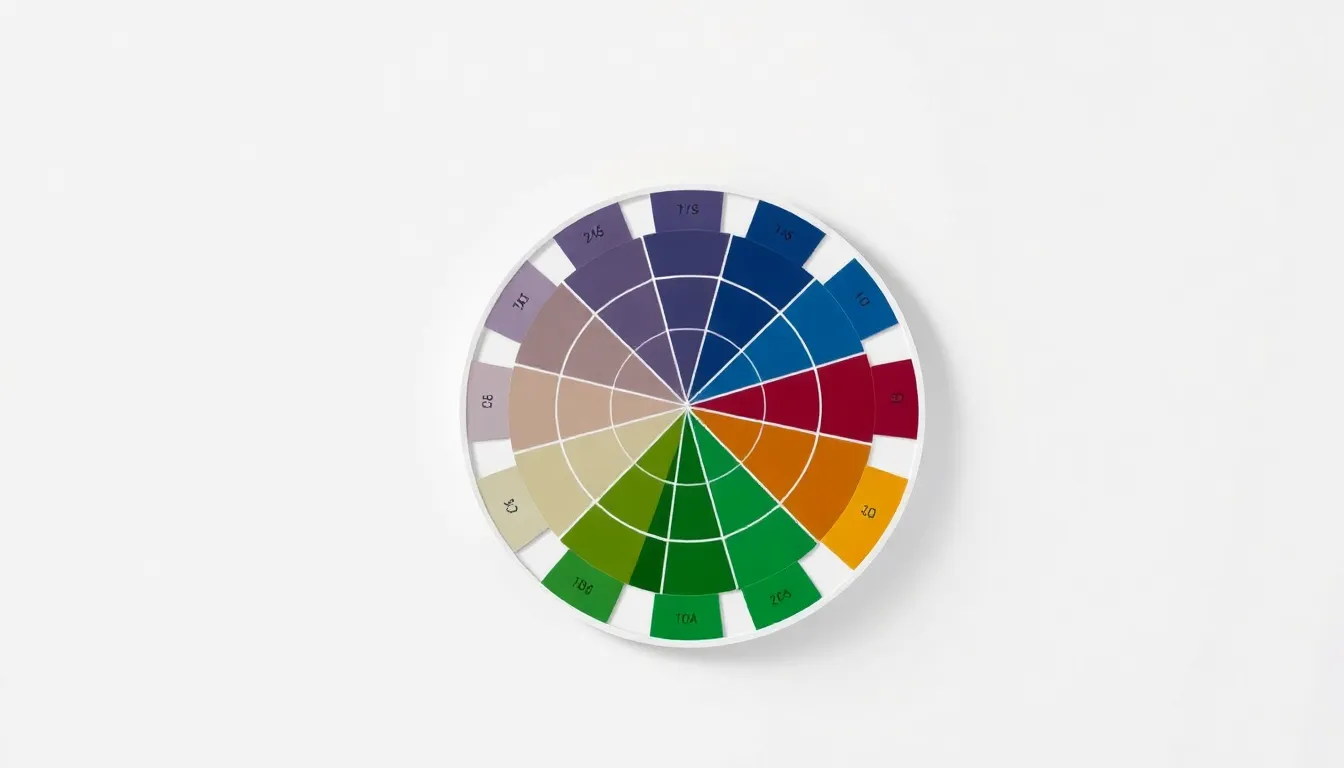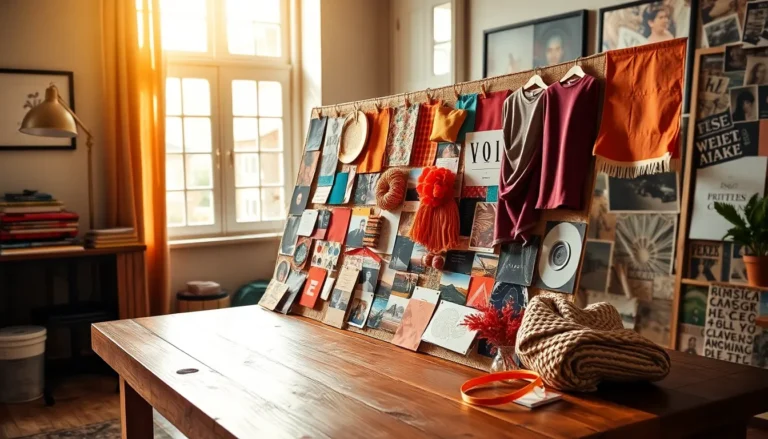Table of Contents
ToggleColor schemes play a crucial role in design, influencing emotions and perceptions in ways that often go unnoticed. From vibrant palettes that energize a space to soft tones that create tranquility, the right combination of colors can transform any environment. Understanding how to effectively use color schemes is essential for designers, marketers, and anyone looking to make a lasting impression.
In today’s visually-driven world, the impact of color extends beyond aesthetics. It shapes brand identity, enhances user experience, and can even affect decision-making. By mastering the art of color combinations, individuals can elevate their projects, ensuring they resonate with their intended audience. Whether it’s for a home makeover, a website redesign, or a marketing campaign, discovering the perfect color scheme can unlock endless creative possibilities.
Understanding Color Schemes
Color schemes consist of thoughtfully chosen colors that work harmoniously together. They play a crucial role in design, shaping aesthetics and influencing how audiences perceive a project.
Definition of Color Schemes
Color schemes refer to the specific combinations of colors used in a visual design. These combinations create different effects and evoke various emotions. Common types include complementary colors, which are opposite each other on the color wheel; analogous colors, which are next to each other; and monochromatic colors, which use variations of a single hue. Understanding these categories helps designers select appropriate palettes for their projects.
Importance of Color Schemes in Design
Color schemes significantly impact design quality and effectiveness. They enhance visual appeal and contribute to brand recognition. Consistent use of color schemes can foster emotional connections, guiding viewers towards desired responses. For instance, warm colors often evoke feelings of energy and warmth, while cool colors tend to convey calmness and professionalism. Therefore, selecting the right color scheme influences overall user experience, making it essential for designers and marketers.
Types of Color Schemes

Color schemes play a crucial role in design, offering various combinations that evoke specific feelings and aesthetics. Below are key types of color schemes commonly used in design.
Analogous Color Schemes
Analogous color schemes consist of colors that are adjacent on the color wheel, creating a harmonious look. Typically, these schemes include one dominant color paired with two similar colors. For example, blue, blue-green, and green work well together. Designers often use these schemes to create serene and cohesive visuals. These schemes excel in establishing a soothing and inviting atmosphere, commonly used in interior design and branding.
Complementary Color Schemes
Complementary color schemes incorporate colors that are opposite each other on the color wheel. This stark contrast generates vibrant and energetic visuals. Primary examples include red paired with green or blue with orange. Such color combinations draw attention and can highlight specific elements in a design. Designers frequently use complementary schemes to create dynamic and eye-catching layouts, particularly in advertisements and marketing materials.
Monochromatic Color Schemes
Monochromatic color schemes focus on variations of a single color, utilizing different shades, tints, and tones. This approach results in a sophisticated and cohesive appearance. For instance, one might use various blues ranging from light sky blue to deep navy. Monochromatic schemes simplify the design process while still offering depth and interest. Their subtlety makes them popular for professional settings, websites, and product packaging, promoting a unified brand identity.
Creating Effective Color Schemes
Color schemes significantly impact design and audience perception. Selecting the right colors enhances aesthetics and creates desired emotional responses.
Choosing the Right Colors
Choosing colors involves understanding color theory and their psychological effects. Consider the following criteria when selecting colors:
- Brand Identity: Align colors with the brand’s values and message to foster recognition.
- Emotional Response: Use colors that evoke specific feelings relevant to the intended audience. For instance, blue conveys trust, while red generates excitement.
- Contrast and Accessibility: Ensure sufficient contrast between colors for readability, making designs accessible to all users, including those with visual impairments.
- Cultural Context: Acknowledge cultural associations of colors, as meanings can vary significantly across different cultures, affecting viewer perception.
Tools for Color Scheme Generation
- Adobe Color: Allows users to create and explore color palettes based on different color harmonies.
- Coolors: Offers a fast way to generate color schemes with easy adjustments and variations.
- Canva Color Palette Generator: Enables users to upload images and extract dominant colors, aiding in inspiration from existing visuals.
- Color Hunt: Features a collection of curated color palettes, providing users with trendy color combinations for design projects.
Color Schemes in Different Contexts
Color schemes significantly impact various design contexts, enhancing aesthetics and user engagement. Understanding their application in graphic design and interior design is crucial for maximizing effectiveness.
Color Schemes in Graphic Design
Graphic design relies heavily on color schemes to convey messages and evoke emotions. Complementary color schemes are commonly used to create striking visuals that capture attention, ideal for logos and advertisements. Analogous schemes offer a more subtle approach, providing a harmonious look suitable for websites and branding. Monochromatic schemes, with variations of a single color, deliver a sleek and modern appearance, perfect for infographics and presentations. Tools like Adobe Color assist designers in exploring and generating effective palettes tailored to their specific needs.
Color Schemes in Interior Design
Interior design employs color schemes to influence mood and enhance space functionality. Analogous color schemes create serene environments, making them popular in bedrooms and relaxation areas. Complementary schemes inject energy into spaces, often found in kitchens and creative studios. Monochromatic schemes promote visual cohesion, frequently used in professional offices and minimalist homes. Color selection in interior design considers natural lighting, room purpose, and occupant preferences, ensuring an inviting and engaging atmosphere.
Mastering color schemes is vital for anyone involved in design. The right color combinations not only enhance aesthetics but also evoke emotions and influence perceptions. By understanding the various types of color schemes and their applications, designers can create impactful visuals that resonate with their audience.
Utilizing tools for color generation simplifies the process of finding the perfect palette. Whether it’s for branding, marketing, or interior design, selecting the appropriate colors paves the way for a memorable experience. Ultimately, a well-chosen color scheme can elevate any project, making it stand out and connect with viewers on a deeper level.




